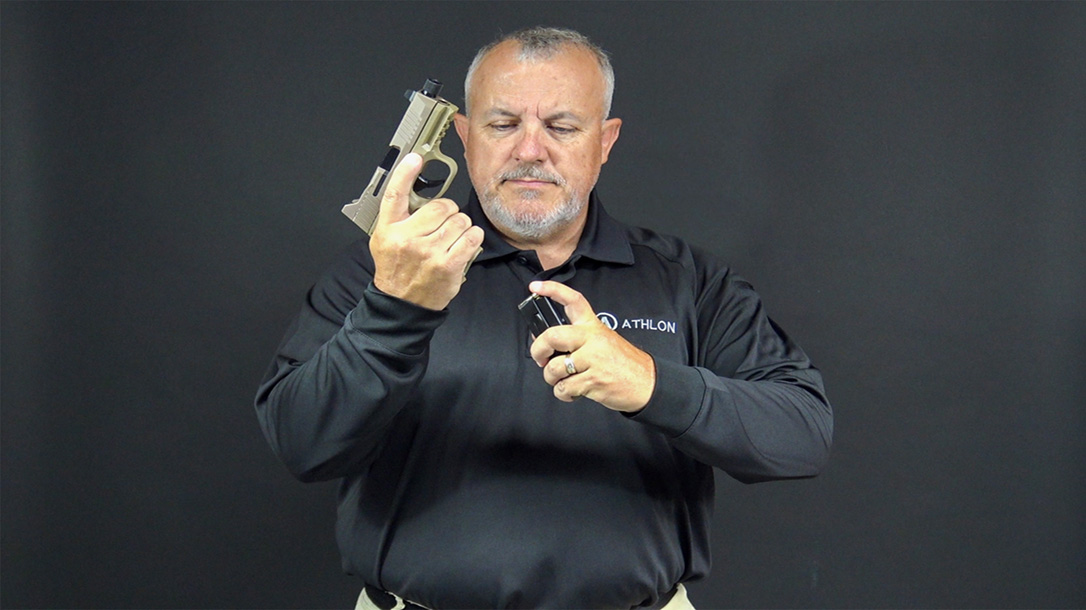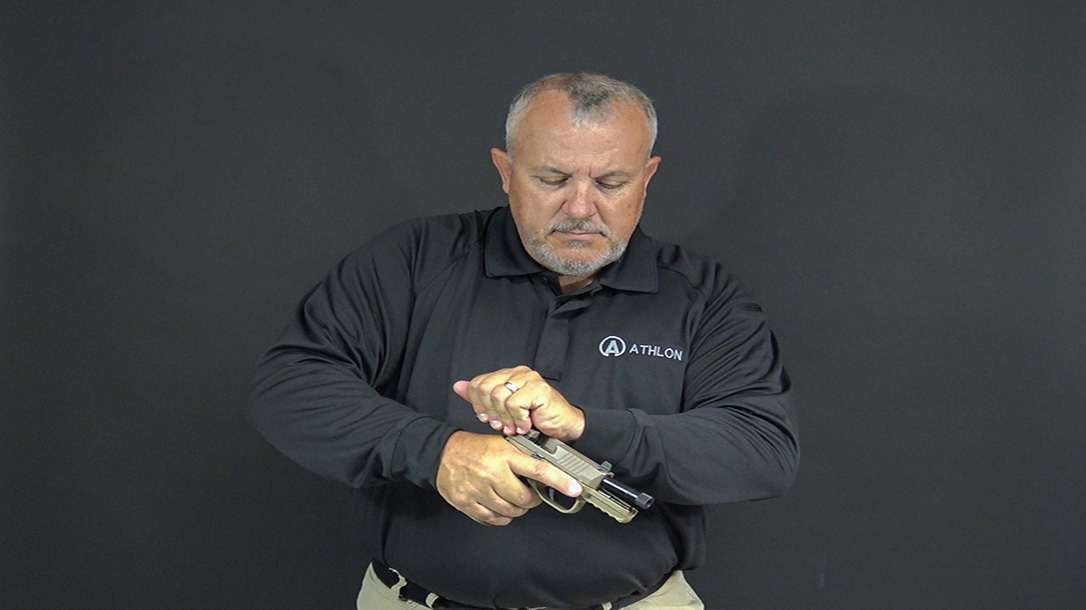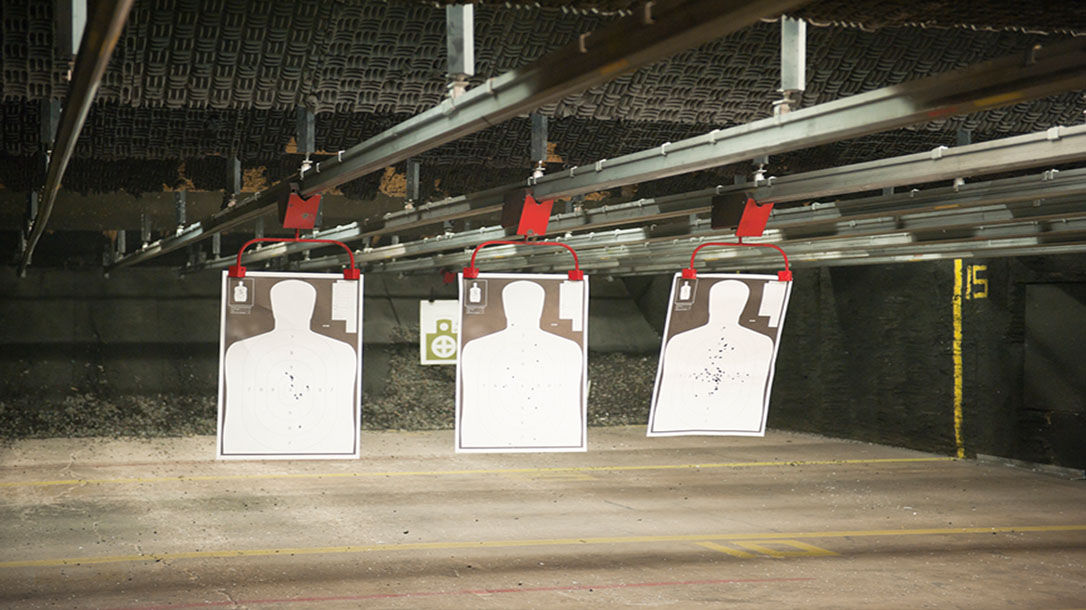The firearms industry has seen unprecedented growth in the number of new shooters over the last several years. People have discovered that shooting can be enjoyable and empowering. However, the skills to succeed in these arenas though can be difficult to master. This is especially true with the handgun. It is relatively small with a short sight radius or distance between the front and rear sights. This can make accurate aiming a challenge. Throw into that the fact that most stock triggers require pressure equivalent to twice the weight of the gun to fire and things get more challenging. With training and practice, you can master the handgun. To help you get started, let’s take a look at how to shoot a gun without getting kicked off the range.
Its Best To know How To shoot A Gun
Our first topic is always safety. If you are at a public range, it is important to understand and follow the range rules or face banishment. While most range rules are rational, some go overboard and include things like waiting several seconds between shots. Beyond the range rules, there are four cardinal safety rules that are important to follow. These rules are:
1. All guns are always loaded. Treating all guns as if they were loaded helps us to avoid a negligent discharge.
Advertisement — Continue Reading Below
2. Never let the muzzle cover anything you are not willing to destroy. This translates to, “don’t point the gun at anything you don’t want to shoot.”
3. Keep your finger off the trigger until your sights are on the target.
4. Be sure of your target and what is beyond it. Bullets are very unforgiving and if you miss your target you need to make certain it will impact a safe area.
Advertisement — Continue Reading Below

Ready To Rock
We are now at our designated shooting area and are ready to roll. Let’s assume that you are good with loading your magazine. Now we need to get the mag in the gun. Facing downrange bring the gun directly in front of yourself. Muzzle up at a 45-degree angle and finger off the trigger. You will be looking at the side of the gun. Take your magazine with your support side hand and index it on the magazine well. With one firm smooth motion seat the magazine into the gun. There is no need to spank your magazine further. Seat it like you mean it and it will be good. Now point the muzzle downrange and reach over the rear of the slide. Grab it with your entire hand and pull the slide back. At the same time, push the lower forward. These two motions will rack the slide and chamber a round. The gun is now “hot” and ready to shoot.
The Correct Grip
Now we can get into the technical side of shooting. We start with the grip. A good grip on the gun is critical if we are to enjoy any sort of accuracy. While there are several versions out there, the best grip will have the barrel in line with the bones in your forearm. The web of your shooting hand should be high on the back of the gun and fully under the back strap. Your thumb should be pointing down the slide. Your fingers will wrap over the top of your first hand and your thumb will be pointed down the slide as well. The thumb from your strong side hand will now rest on top of the muscle of your support side hand. This “thumbs forward” grip allows the large muscle of your thumb to settle up against the gun. This in turn will create a full 360° grip with no weak spots or openings.
Advertisement — Continue Reading Below
Proper stance
Next up is stance. Like grip, there are numerous stances you can use. The stance I teach to new shooters is simply what I call a fighting stance. This is the same stance you would take if someone pushed you to the point where you were going to have to fight them. Your support side foot is forward, and your strong side foot is back about shoulder width. You are bladed just slightly away from the target. Extend your arms forward with the gun in your hand. You should be extended but not completely locked out. Your shoulders should be engaged, but not wrapped up around your ears. Lean just slightly forward onto the balls of your feet and get ready to fight.
Sight Alignment
Now we have our gun up we need to look at our sight picture and slight alignment. Sight picture is everything you see when you look down the barrel of your gun. This includes your sights and the target. The correct sight picture for handgun shooting can seem counterintuitive, however. While we generally want to look at our target, it is important that we focus primarily on the front sight. A good sight picture would consist of a slightly blurry rear sight, a crystal-clear front sight, and a slightly blurry target. Now we align our sights. The correct alignment will have the front sight positioned in the middle of the rear sight notch with an equal light space on each side. The top of the front sight will be level with the surface of the rear sight. This orientation of our sights will allow us to hit our target consistently and accurately.

Advertisement — Continue Reading Below
It’s Go Time!
Ok, we have our gun up and sights ready, it’s time to pull the trigger. Pressing the trigger is one of the most challenging parts of accurate shooting. As I mentioned earlier, it can sometimes take up to five pounds of pressure to run a stock trigger. This can translate into a little extra motion in the gun and possibly even a large dip in the muzzle. Finger placement on the trigger is important. With semi-auto pistols, the trigger should rest on the middle of the last pad of your index finger. We will now begin to press the trigger directly to the rear. We want a smooth and continuous motion. A smooth and consistent trigger press is the key to keeping your shots on target. If you rush or jerk the trigger at the end, your shots will miss regardless of how good your sight work is.
The skills required to expertly run a handgun are numerous. As with anything you take seriously, professional training is a must. While you may have been shooting since you were “knee high to a grasshopper,” it is a good idea to have a pro offer some tips and advice. Be patient with yourself and judge yourself based on your own performance and improvement. It may take some time, but with effort, you can master the handgun.























